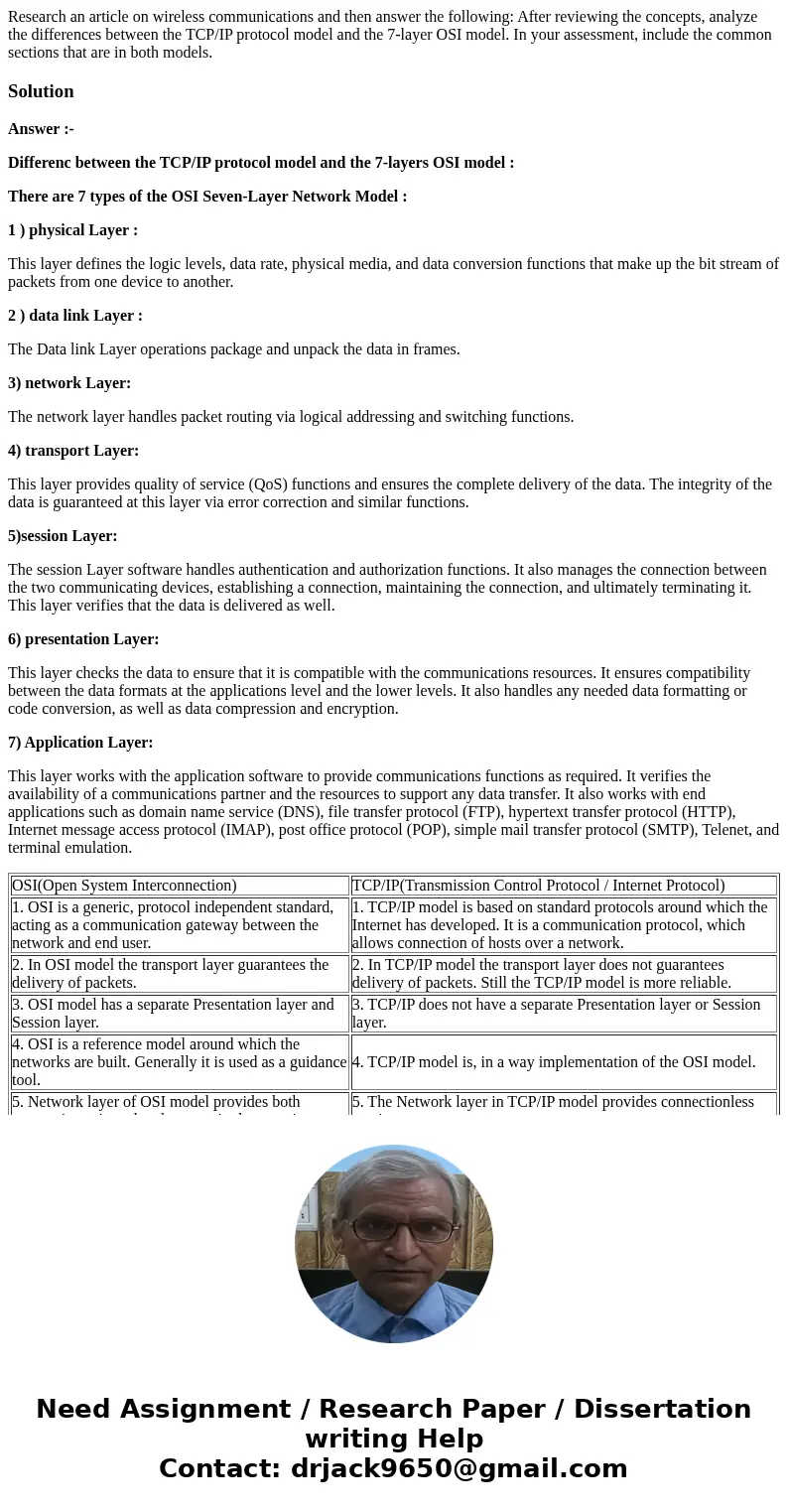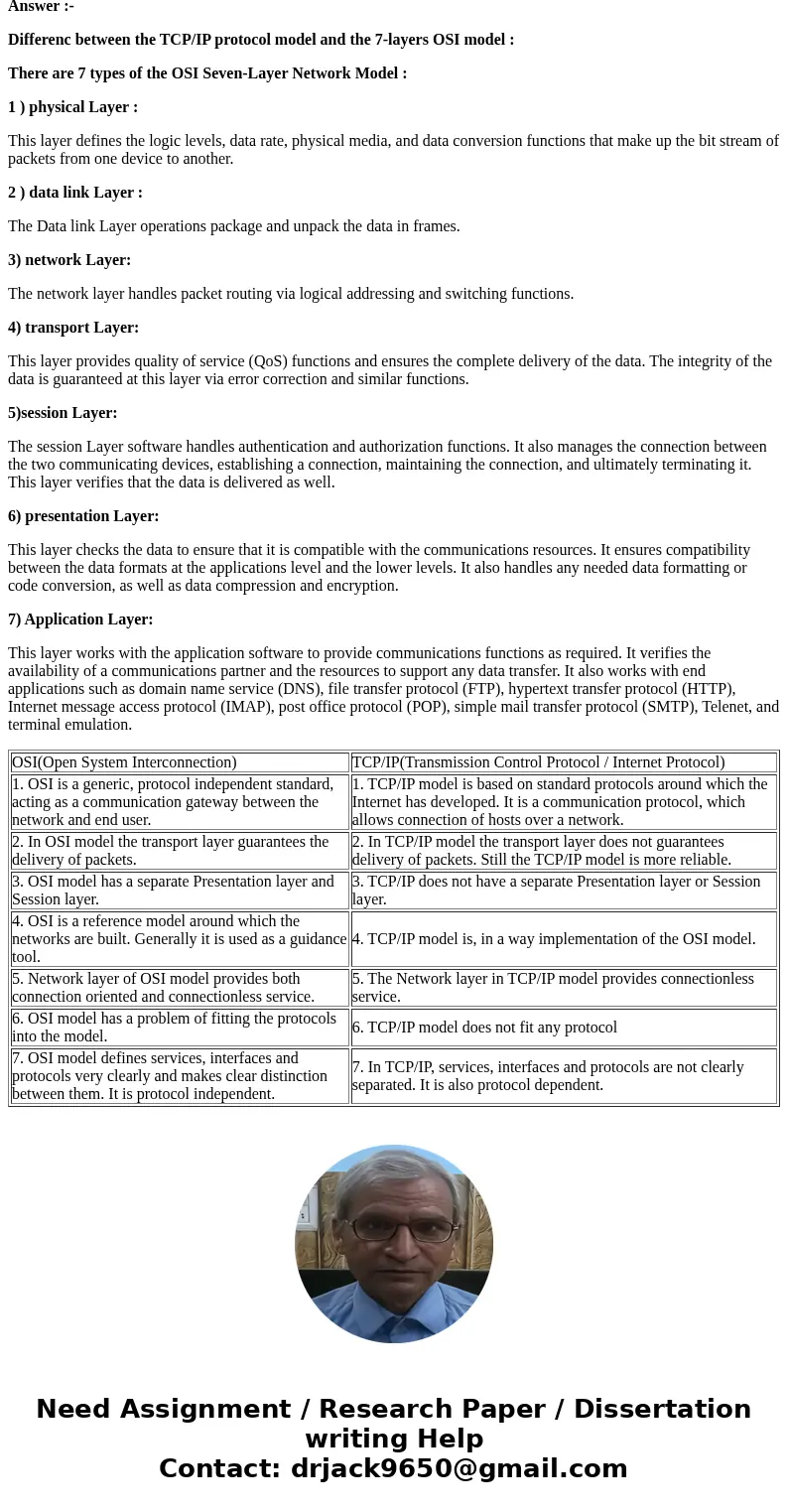Research an article on wireless communications and then answ
Solution
Answer :-
Differenc between the TCP/IP protocol model and the 7-layers OSI model :
There are 7 types of the OSI Seven-Layer Network Model :
1 ) physical Layer :
This layer defines the logic levels, data rate, physical media, and data conversion functions that make up the bit stream of packets from one device to another.
2 ) data link Layer :
The Data link Layer operations package and unpack the data in frames.
3) network Layer:
The network layer handles packet routing via logical addressing and switching functions.
4) transport Layer:
This layer provides quality of service (QoS) functions and ensures the complete delivery of the data. The integrity of the data is guaranteed at this layer via error correction and similar functions.
5)session Layer:
The session Layer software handles authentication and authorization functions. It also manages the connection between the two communicating devices, establishing a connection, maintaining the connection, and ultimately terminating it. This layer verifies that the data is delivered as well.
6) presentation Layer:
This layer checks the data to ensure that it is compatible with the communications resources. It ensures compatibility between the data formats at the applications level and the lower levels. It also handles any needed data formatting or code conversion, as well as data compression and encryption.
7) Application Layer:
This layer works with the application software to provide communications functions as required. It verifies the availability of a communications partner and the resources to support any data transfer. It also works with end applications such as domain name service (DNS), file transfer protocol (FTP), hypertext transfer protocol (HTTP), Internet message access protocol (IMAP), post office protocol (POP), simple mail transfer protocol (SMTP), Telenet, and terminal emulation.
| OSI(Open System Interconnection) | TCP/IP(Transmission Control Protocol / Internet Protocol) |
| 1. OSI is a generic, protocol independent standard, acting as a communication gateway between the network and end user. | 1. TCP/IP model is based on standard protocols around which the Internet has developed. It is a communication protocol, which allows connection of hosts over a network. |
| 2. In OSI model the transport layer guarantees the delivery of packets. | 2. In TCP/IP model the transport layer does not guarantees delivery of packets. Still the TCP/IP model is more reliable. |
| 3. OSI model has a separate Presentation layer and Session layer. | 3. TCP/IP does not have a separate Presentation layer or Session layer. |
| 4. OSI is a reference model around which the networks are built. Generally it is used as a guidance tool. | 4. TCP/IP model is, in a way implementation of the OSI model. |
| 5. Network layer of OSI model provides both connection oriented and connectionless service. | 5. The Network layer in TCP/IP model provides connectionless service. |
| 6. OSI model has a problem of fitting the protocols into the model. | 6. TCP/IP model does not fit any protocol |
| 7. OSI model defines services, interfaces and protocols very clearly and makes clear distinction between them. It is protocol independent. | 7. In TCP/IP, services, interfaces and protocols are not clearly separated. It is also protocol dependent. |


 Homework Sourse
Homework Sourse